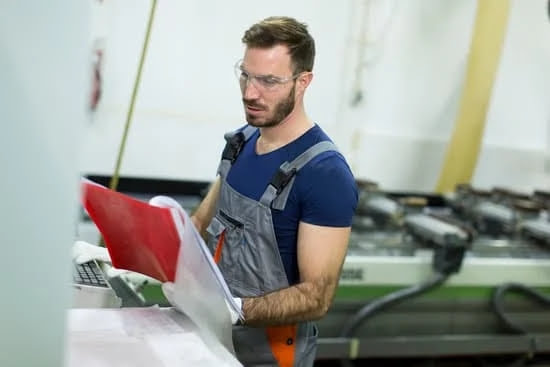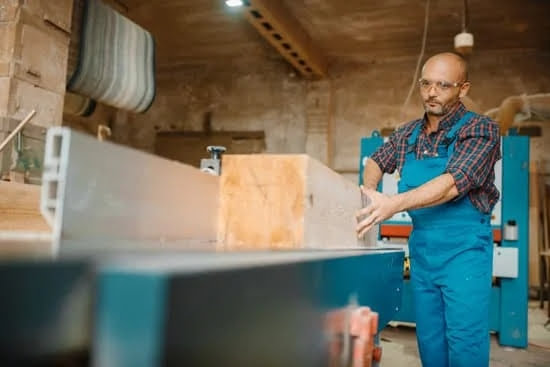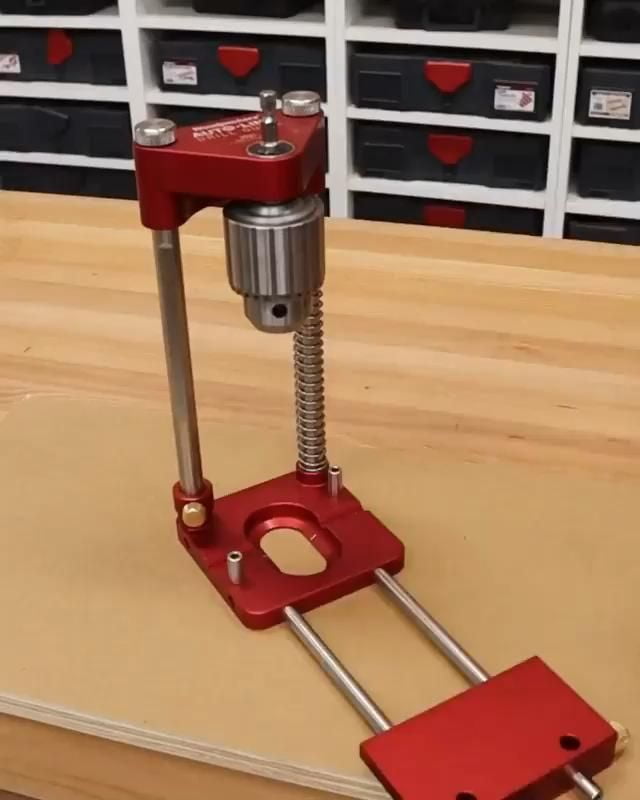Introduction
Woodworking is an art and craft of building or making items from wood. It is an incredibly rewarding and enjoyable hobby that can produce beautiful and useful pieces for both decoration and practical use. Woodworking offers a wide range of projects to choose from, whether you’re interested in crafting furniture, carving objects, or repairing something with wooden parts. There are countless benefits to woodworking, including honing your skills, creating something functional or aesthetic out of nothing, pride of having created a tangible item with your own hands, the therapeutic effects of working with your hands, the satisfaction of seeing a project completed perfectly & on budget, saving money by doing it yourself instead of purchasing manufactured products, stimulating creative thinking through problem solving & improvisation and connecting with nature through the raw materials used in projects.
One thing that makes woodworking so rewarding is acquiring the right tools for each task. With basic hand tools like hammers and saws at your disposal along with more advanced power tools such as sanders and routers these tasks become much easier to accomplish effectively. When picking out the tools that you need for a specific job there are some essential beginner woodworking items such as table saws, miter saws, band saws jigsaws drill presses screwdrivers hand planes orbital sanders clamping tools measuring tapes chisels and socket sets just to name a few. Choosing the right tool for each task plays into making sure you complete it properly efficiently safely and most importantly successfully. Developing an understanding of these tools can help build confidence when getting started in woodworking which brings immense satisfaction every time completing each piece no matter how big or small.
Essential Tools
The most important woodworking tools to get started are a handsaw, drill, hammer, screws and nails, clamps, chisels, and sandpaper. All of these items can be used to build basic projects such as boxes, shelves or frames. Additionally, an adjustable wrench or saw vises can help with assembling furniture pieces. Wood glue is also recommended for use when working with wood since it will help with temperature changes that cause the wood to expand or contract. Finally having the right safety gear such as face masks, gloves and safety glasses are essential when using power tools such as routers, planers and jig saws.
Beginner’s ToolKit
A beginner’s toolkit for woodworking can include essential basics such as saws, chisels, drills and other hand tools. For the beginner there are a wide variety of clamps, planes, files and hammers available – these vary in size, design and functionality. It is important to select tools that allow for easy manoeuvring and control when carrying out simple tasks. Other items such as measuring tools: measuring tapes, squares and protractors are also essential for accuracy. Safety equipment is also important so googles, gloves and dust masks should always be used while woodworking. Finally, wood finishing products such as stains, varnishes or oils will be needed later on during the project. Brushes or cloths should be present to apply these finishes properly. All the above mentioned items in this beginner’s toolkit can help to build confidence with new skills; allowing them to create their dream projects with ease and accuracy.
Modern Woodworking Equipment
When it comes to woodworking, beginner tools come in many shapes and sizes. The most essential basic items to get started in the workshop are a saw, hammer, drill, level, and screwdriver. These are the general tools used in almost every woodworking project. From there, many experienced woodworkers like to expand their tool collection with more specialized items.
Drill bits are an important addition to any basic tool set as they can make it easy to bore holes of different sizes into a variety of materials such as wood, metal or plastic. Some drill bits come with special features such as adjustable depths and replaceable tips for when one wears out over time.
An assortment of chisels is a handy extra piece of equipment for those who do more intricate carving or joinery work. Chisels typically feature a sharp blade that is inserted into the handle and can be hammered against for precise shaping tasks. A wide variety of shank sizes (shank being the portion that fits into the handle) helps ensure that there is one suited to whatever project you are undertaking.
Hand planes can also be great beginner tools for those who intend on doing more complicated precision cutting jobs such as smoothing rough down lumber or taking off small bits at an angle. Planes usually consist of two parts: an outside plain body which houses interchangeable cutter blades inside affixed below a crossbar lever that you then use by hand to adjust depth and angle during use.
Finally, do not forget about sandpaper! Sandpaper comes in all different grades and backing weights so no matter what type of finishing job you have in mind; there should be something suitable available in store or online that suits your needs perfectly!
Safety First
Safety is always a top priority when engaging in woodworking. Here are some guidelines for using woodworking tools safely and properly:
1. Wear appropriate safety gear, such as safety goggles and gloves, when working with any kind of saws, power tools or other machinery.
2. Be aware that the force of electricity is not something to take lightly; follow all manufacturer’s instructions on how to use each tool correctly.
3. Make sure that your workspace is free from any clutter that could become a potential hazards, such as cords or loose pieces of wood flying around. Make sure that you keep your work area clear at all times while working on your project.
4. Never reach over a piece of equipment while it is running; turn it off first and wait until it has completely stopped before proceeding.
5. Take the time to stop and think about what you are doing; make sure you know what will happen next before attempting a task so you can be ready for any unexpected situations that may arise during the process.
6. Never leave a tool unsecured after using it; always put it away when finished or make sure someone else does too!
7. Always make sure that blades, drill bits, sandpapers and other materials remain sharp but never tamper with any blades if they are dull or damaged; replace them immediately with new ones instead!
Woodworking Plans
Finding quality woodworking plans can be a daunting task, especially when you’re just starting out on your woodworking journey. Fortunately, there are many beginner-friendly resources available online that can help provide some guidance for those starting out in the craft. Some of the most common helpful beginner plans can include detailed instructions layout diagrams with dimensions and measurements or even step-by-step instructions for putting together various woodworking projects such as bookcases and cabinets. These resources provide excellent guidance as to what requirements and tools are necessary for a successful project, ensuring a safe and optimal outcome.
Aside from finding the right plans, it’s also important to have the proper basic tool set to begin building projects. Basic tools should include items like hammers, saws, drills, screwdrivers, tape measures, etc. Investing in higher quality tools will ensure greater longevity but there are many brand names of tools that offer relatively inexpensive starting toolsets designed to meet the needs of beginners interested in taking up a hobby in woodworking. Additionally you may also want to consider a few utility knives/razor blades; sandpapering blocks; cutting board; screw starters; clamps; and square levels – all useful items to build any type of project effectively.
Research and Resources
When first starting out in the wonderful world of woodworking, it’s important to understand the basics and explore your options. Consider researching different types of wood and the corresponding difficulties with working them. Also look into potential tools that could be useful during your projects. Resources like online forums, instructional videos or books, and experienced mentors are all excellent details that can expand your knowledge as a beginner.
The modern world has made an immense amount of woodworking resources available at your fingertips. Online tutorials provide step-by-step instructions on how to tackle various projects. Forums are available to discuss questions or problems one may have encountered while working on a piece. Often times, these forums consist of qualified professionals who have the wealth of experience to teach beginners the ropes in no time at all. Instructors or knowledgeable family members or friends can be another great option for learning tips and tricks from those with experience in making furniture or other items from woodworking projects.
In addition to resources like tutorials, research is necessary to become more familiar with what type of tools you need for each project. For example, basic power tools are essential for anyone looking to create quality pieces but must also be used carefully. Additionally, considering local stores when looking for project supplies is highly recommended as not only do you get a chance to look through an expansive selection but also talk directly with someone who knows their stuff when it comes to supplies needed for any given project or work piece design – allowing even novice DIY-ers the chance to get started on making something extraordinary!
Conclusion
Starting out on a new hobby is always exciting and woodworking is no exception. You can create items of furniture, crafts, or simply make something to give as a gift. The most important equipment you will need for any project is a good set of beginner tools. With the right tools, you can begin a lifetimes worth of woodworking projects that you can be proud of.
Common beginner tools include hammers and chisels, saws such as backsaws, coping saws and power saws, various hand planes and sanding blocks as well as drill bits and screws. Basic shop safety gear like glasses and hearing protection may also be necessary depending on the size of your workshop. When starting out in woodworking it’s easy to get overwhelmed with the amount of tools and materials available so take your time when selecting the right ones for you. Reading up on basic shop safety, understanding the types of cuts each tool can make, and familiarizing yourself with how they work will go a long way towards making sure you start off safely in this craft. Professional help may also be needed if your project requires more complicated joinery or power tool use as it’s essential to understand all aspects before attempting these tasks in order to avoid dangerous accidents from occurring. All these steps however are simply part of the process of taking your first steps into the world of woodworking – just like anything else worth learning, there are some mistakes that are inevitable but ultimately rewarding once you have completed your first piece!

Hi everyone! I’m a woodworker and blogger, and this is my woodworking blog. In my blog, I share tips and tricks for woodworkers of all skill levels, as well as project ideas that you can try yourself.





